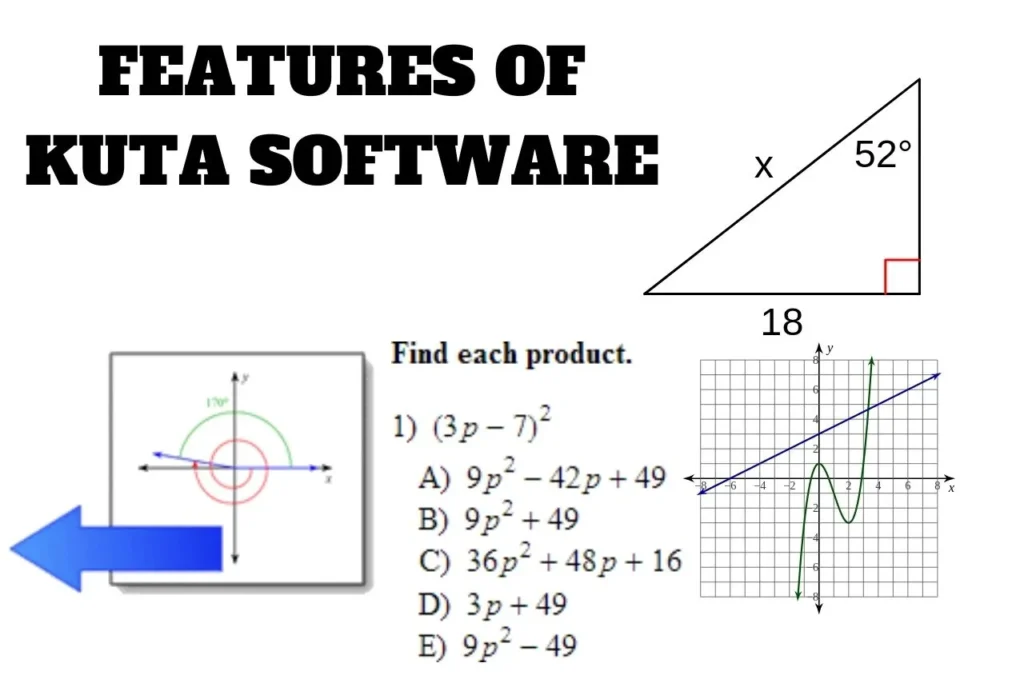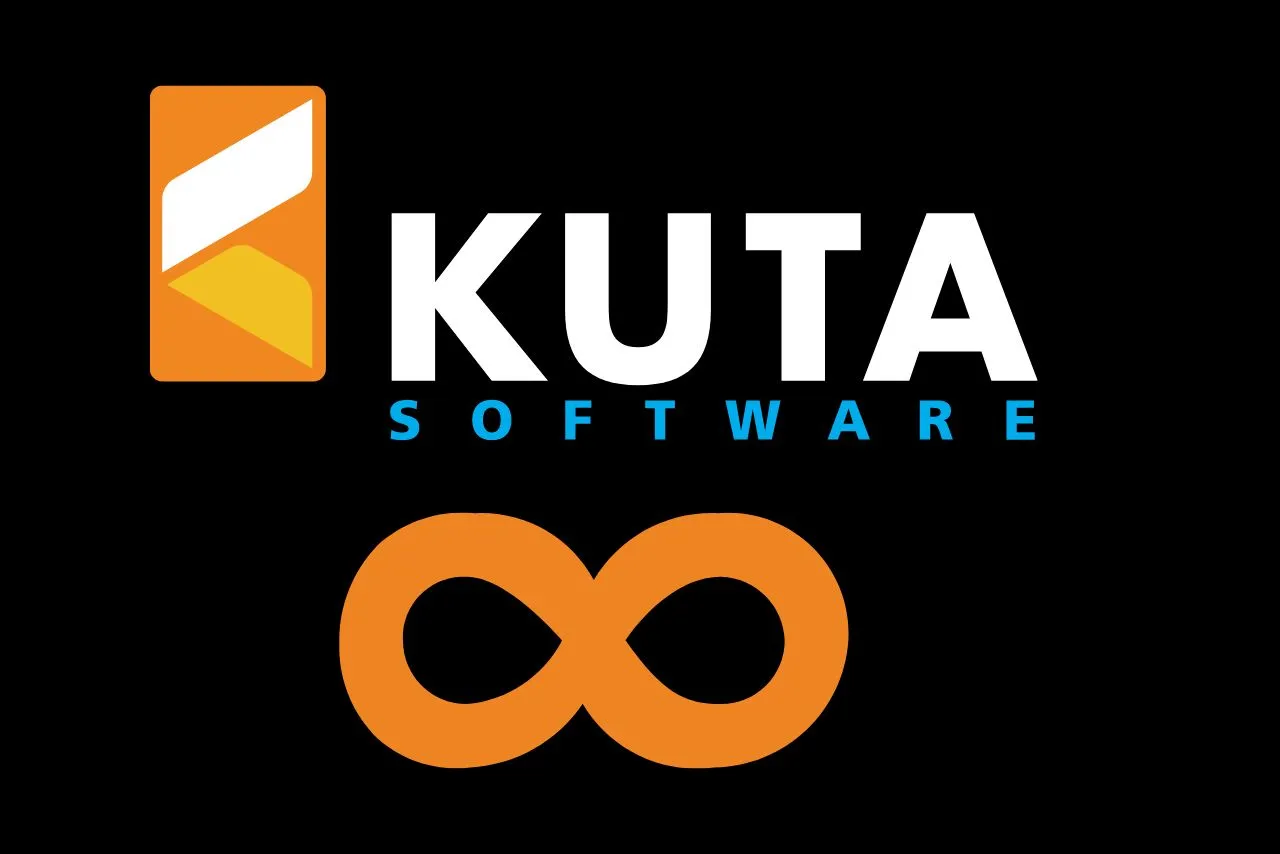The field of educational technology has experienced a significant transformation, with Kuta Software emerging as a leading force that has fundamentally changed the dynamics of mathematics education. This tool has a significant impact that goes beyond traditional approaches, giving teachers creative ways to create assignments and giving students a more engaging, tailored learning experience. Examining the characteristics of the software reveals a range of functionalities that enhance its effectiveness. Kuta Software offers a flexible platform for improving mathematical skills, from its expertise in producing a variety of questions within each topic to its support for numerous response forms. This article explores its various functionalities, uses, and overall impact on the field of mathematics education.
What is Kuta Software?
Kuta Software is a collection of math-related computer programs designed to assist educators and learners in developing, practicing, and mastering various mathematical concepts. This software was created by Kuta Software LLC and is intended for use in all schools worldwide. Math assignments can be created and completed in a way that facilitates understanding and math proficiency for all.
Kuta Software’s user-friendly interface makes it easy to create personalized math lessons that may be adjusted to varying levels of difficulty and require tailored instruction. By offering a variety of questions within each topic, the software goes beyond traditional pen-and-paper exercises and promotes a deeper comprehension of mathematical topics. Variable answer formats, ranging from decimals to fractions, are supported by their flexibility.
The Foundation of Kuta Software:
Kuta Software was founded by Scott Baldridge in 2002. Baldridge, a former high school math teacher, identified a need for software to simplify the process of creating and grading math assignments. His vision was to develop tools that would allow teachers to spend more time focusing on teaching and less time on administrative tasks. The software gained popularity quickly, and over the years, Kuta Software has expanded its offerings to cover a wide range of mathematical topics, from basic arithmetic to advanced calculus. Its user-friendly interface and robust functionality make it a go-to resource for educators at various levels.
How Kuta Software Works:
If you’re looking for an explanation of how Kuta Software works, here’s a general overview based on the information you provided:
1. Topic Selection:
Users can choose from various mathematical topics for creating assignments. These topics may include algebra, geometry, calculus, etc.
2. Mathematical Properties:
Users can specify the mathematical properties they want to focus on within the chosen topic. For example, in algebra, they might choose to generate questions related to solving equations, factoring polynomials, or simplifying expressions.
3. Options for Each Topic:
Different options are available for each topic, allowing users to customize the types of questions generated. This could include specifying the difficulty level, the number of steps in a solution, or the types of numbers involved (integers, fractions, decimals, etc.).
4. Question Generation:
Kuta Software can generate an unlimited number of questions based on the chosen topic and specified options. This provides a variety of practice problems for students.
5. Distribution to Students:
Once questions are generated, users can distribute assignments to their students. This could involve various formats, such as printed assignments or digital distribution.
Key Features of Kuta Software:

- Unlimited Questions: Kuta Software empowers educators with the ability to generate an infinite variety of questions, ensuring students have ample opportunities for extensive practice and mastery of concepts.
- Multiple-Version Printing: With the feature of Multiple-Version Printing, Kuta Software simplifies the process of creating diverse sets of assignments, enabling educators to cater to individual student needs and ensuring a fair distribution of assessments.
- Export Questions: Kuta Software’s Export Questions feature streamlines the sharing and utilization of generated content, facilitating seamless integration into various platforms and enabling educators to adapt assessments for diverse teaching needs.
- Diagrams Drawn to Scale: With Diagrams Drawn to Scale, Kuta Software ensures visual accuracy in mathematical representations. This feature aids students in grasping spatial relationships and enhances their ability to interpret and solve problems involving scaled diagrams.
- Answer Format: Customize assessment formats effortlessly with Kuta Software’s Answer Format feature. This flexibility allows educators to align evaluations with specific learning objectives, promoting a more tailored and effective approach to assessing student knowledge and skills.
- Graphing and Graph Paper Utility: Kuta Software’s integrated Graphing and Graph Paper Utility offers a comprehensive platform for visualizing mathematical concepts. Educators can utilize these tools to enhance lessons, providing students with hands-on experience in graphing and problem-solving.
- Export Questions: Kuta Software’s Export Questions feature enhances collaboration by enabling educators to share content seamlessly. The exported questions can be utilized in different formats or platforms, fostering a collaborative teaching environment and facilitating the exchange of valuable educational resources.
- Good Multiple-Choice Questions: Kuta Software’s commitment to providing high-quality multiple-choice questions contributes to effective assessments. These questions are thoughtfully designed to evaluate not only knowledge but also critical thinking skills, offering educators a valuable tool for diverse and comprehensive evaluation strategies.
Applications of Kuta Software in Education:
1. Enhancing Classroom Instruction:
Kuta Software serves as a valuable aid in the classroom, allowing teachers to reinforce concepts through targeted practice. With the ability to generate worksheets that align with specific lessons, educators can provide additional resources for students to solidify their understanding.
2. Individualized Learning:
The software’s adaptability makes it well-suited for individualized learning plans. Teachers can create assignments tailored to each student’s proficiency level. Providing additional challenges for those who excel and additional support for those who need it.
Read Also: What is XCV Panel? How Does it work?
3. Homework Assignments:
Kuta Software’s worksheet generation capabilities make it an ideal tool for creating homework assignments. Teachers can ensure that students have ample practice outside of the classroom, reinforcing the day’s lessons and preparing them for assessments.
4. Formative Assessment:
The instant feedback feature transforms the software into a powerful formative assessment tool. Teachers can quickly identify areas where students may be struggling and address these challenges promptly, adjusting their instructional approach as needed.
5. Test Preparation:
Kuta Software is widely used for test preparation, especially for standardized tests that include mathematical sections. The software allows students to familiarize themselves with the types of questions they might encounter, building confidence and competence in their mathematical abilities.
6. Remote Learning Support:
In recent years, the education landscape has seen a significant shift towards remote and hybrid learning models. Kuta Software, with its online platform and interactive features, has proven to be an asset for educators navigating these new learning environments.
Criticisms and Challenges:
While Kuta Software has gained widespread popularity, it is not without its criticisms and challenges. Some educators and experts point out the following considerations:
1. Overemphasis on Algorithmic Practice
Critics argue that the software’s focus on generating algorithmic problems may contribute to a surface-level understanding of mathematical concepts. While it excels in providing practice opportunities, educators need to balance this with deeper explorations of the underlying principles.
2. Limited Engagement with Mathematical Reasoning
The instant feedback feature, while valuable for correction, may also discourage students from engaging in the critical thinking and reasoning skills necessary for solving complex mathematical problems independently. Striking a balance between practice and conceptual understanding remains a challenge.
3. Dependency on Technology
As with any software-based tool, there is a risk of overdependency on technology. Some educators express concerns that students may become reliant on the instant feedback provided by the software. Potentially hindering their ability to solve problems without technological assistance.
4. Cost Considerations
While Kuta Software offers a range of features, its premium versions may come with a cost. Schools and educators need to assess whether the investment aligns with their budgetary constraints and educational goals.
Conclusion
Kuta Software has undeniably made a significant impact on mathematics education. Providing teachers and students with a versatile set of tools for practice, assessment, and learning. Its user-friendly interface, customization options, and instant feedback features have positioned it as a staple in many classrooms.

